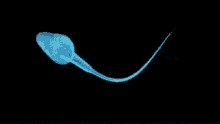Process Of Fertilization Step-By-Step
The Process Of Fertilization Step-By-Step provides an easy overview of how a baby comes into being.
Let’s delve into the fascinating journey of fertilization, step by step:
Ovulation:
- The process begins with the release of a mature egg (ovum) from the woman’s ovary during her menstrual cycle.
- Ovulation typically occurs around the 14th day of a 28-day cycle.
Sperm Journey:
- After intercourse, sperm cells travel through the woman’s reproductive tract.
- They navigate through the cervix, uterus, and finally reach the fallopian tubes.
- The fallopian tubes are where fertilization takes place.
Egg Meets Sperm:
- If sperm successfully reaches the fallopian tube during the fertile window (around ovulation), it encounters the waiting egg.
- Only one sperm will ultimately penetrate the egg’s protective layer.
Fusion of Genetic Material:
- The sperm’s nucleus (containing genetic material) fuses with the egg’s nucleus.
- This union forms a single cell called a zygote.
Zygote Formation:
- The zygote begins dividing rapidly as it travels down the fallopian tube toward the uterus.
- It becomes a blastocyst, a hollow ball of cells.
Implantation:
- The blastocyst reaches the uterus and attaches to the uterine lining (endometrium).
- This process is known as implantation.
- Implantation occurs around 6-10 days after fertilization.
Cell Division and Differentiation:
- The blastocyst continues dividing and differentiating into specialized cell layers.
- The inner cell mass becomes the embryo, while the outer layer forms the placenta.
Embryo Development:
- Over the next weeks, the embryo develops essential structures such as the amniotic sac, yolk sac, and chorion.
- The placenta provides nutrients and oxygen to the growing embryo.
Pregnancy Begins:
- Once implantation occurs successfully, pregnancy begins.
- Hormonal changes prevent the shedding of the uterine lining (menstruation).
Continued Growth:
- The embryo grows into a fetus.
- Vital organs and body systems form during the first trimester.
Conclusion
Remember, this intricate process involves precise timing, cellular interactions, and incredible coordination. It’s a testament to the wonders of life! 🌟👶🌟



No comments:
Post a Comment